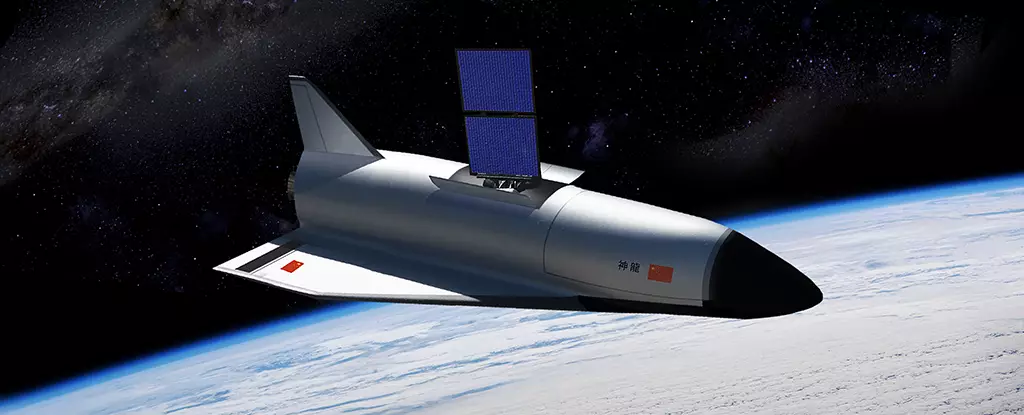China’s latest test mission of a reusable, robotic spacecraft has once again captured the attention of skywatchers around the world. The experimental orbital plane, named Shenlong, meaning “divine dragon” in Chinese, was launched from the Jiuquan Satellite Launch Center on December 14. Similar to previous test missions in September 2020 and August 2022, Shenlong fell into a low orbit. Amateur skywatchers have observed the presence of several small objects, which they have tentatively referred to as “wingmen.” These unidentified objects have also been spotted in the wake of the spacecraft during earlier missions, leading to speculation about their purpose.
During previous missions, these objects, theorized to be “inspector satellites,” were believed to track the test vehicle and assist in its safe return to Earth. They were likely Banxing satellites, developed by China, used to relay images of other spacecraft. Following the latest launch of Shenlong, six new objects, labeled OBJECT A to F, were deployed. Amateur astronomer Scott Tilley has dubbed these objects as “mysterious wingmen” due to the mix of signals they emit. Some of these signals carry small amounts of information, while others appear to act as placeholders without any data. Observers have noted the intermittent signals emitted by these objects, requiring collaborative efforts to gather sufficient detail.
Tilley has highlighted the similarity between OBJECT A’s emissions and those from previous Chinese space plane “wingmen.” These signals are modulated with limited data, suggesting a resemblance and a pattern in China’s missions. He further noted that OBJECT A, which is in a near circular orbit, may have close encounters with OBJECTs D and E, which are in elliptical orbits. This raises questions about their interactions and potential mission objectives. While the exact purpose of these objects remains unknown, amateur astronomers worldwide continue to share their theories.
Amidst the speculation surrounding China’s spacecraft, the United States is likely observing these developments with its own interests in mind. Boeing’s experimental X-37B reusable space plane bears several similarities to China’s Shenlong. Both projects have been shrouded in secrecy, revealing limited details about their purposes and capabilities. The X-37B began as part of NASA’s X-37 project and transitioned into a US Department of Defense initiative in 2004. Interestingly, a new X-37B test flight is scheduled for December 28, indicating the growing competition and mutual interest between the world’s leading spacefaring nations.
As China’s mysterious space plane captures attention and speculation grows, the rest of the world is left in the dark. The purpose and objectives of Shenlong, as well as its accompanying wingmen, remain undisclosed. The increasing interplay between China and the United States in the realm of space exploration highlights the significance of these missions. While the two nations keep their projects closely guarded, the global community can only guess what discoveries and advancements are taking place overhead.


Leave a Reply